5 min read
Air Filters vs Air Dryers: What’s the Difference?
Tsunami Team
:
Jul 13, 2023 12:29:26 PM
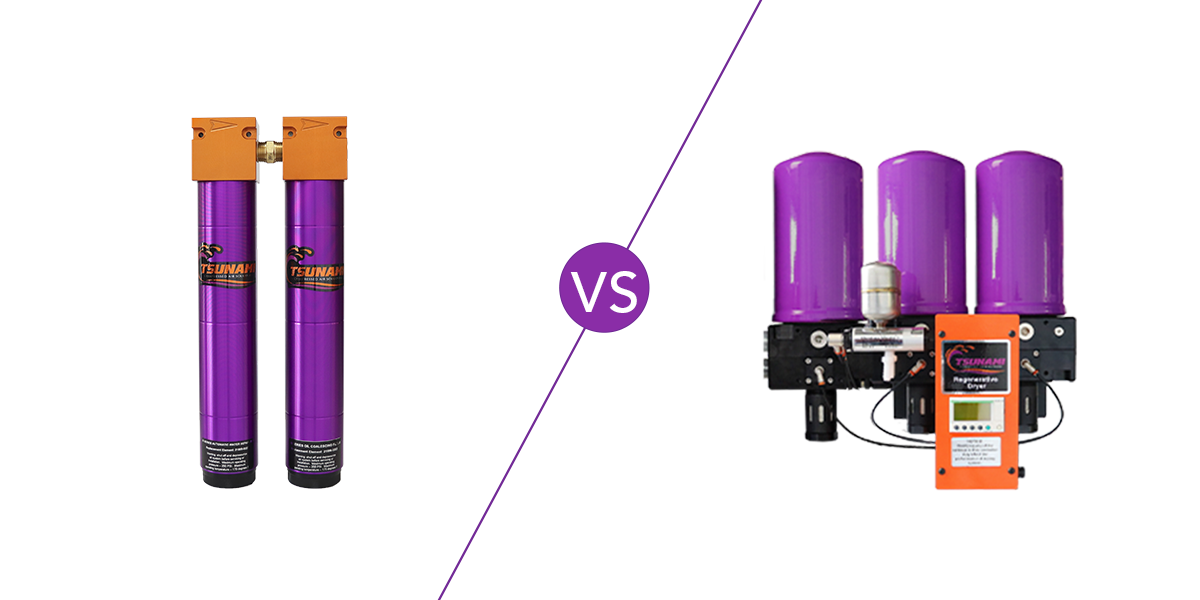
In an air system, the performance and efficiency of pneumatic tools and machinery depend on the quality of the air they receive. If unfiltered or inadequately filtered air is allowed to flow through the tools or equipment, it can have detrimental effects. Not only can it cause damage and wear down the tools, but it can also lead to an inefficient work environment.
In certain scenarios, maintaining compressed air that is completely devoid of dust, water, oil, and other particles is absolutely crucial. To achieve the desired level of dryness, it is essential to have an exceptional air filter working in conjunction with a high-end air dryer.
To determine the best air treatment setup for your system, it's important to know the difference between compressed air filters and dryers, as well as which setup is right for you.
Article contents:
- The Difference Between Air Filters and Air Dryers
- Types of Air Filters and How They Work
- VIDEO: Compressed Air FIlters vs Air Dryers
- Types of Air Dryers and What They Do
- Choosing the Right Setup for Your System
What is the difference between air filters and air dryers?
Compressed air filters and air dryers are a team in creating unrivaled dry air, but what they accomplish individually is different.
Compressed air filters pull out the bulky contaminates - like dust particles, particulates, oils, and liquid water - to prevent equipment damage and to maintain air system performance.
Compressed air dryers are also built to prevent damage in an air system, but their main function is to remove water vapor; known as humidity.
Now that we've talked about the differences at a higher level, let's dive in to understand more:
what do compressed air filters do?
As the first line of defense, compressed air filters play a critical role in filtering out dust, water, oil and larger particulates.
The type of individual filter or filter package you choose will determine the contaminants that are removed.
For some applications, an air filter package is enough to provide the recommended air cleanliness for that tool or process. Depending on the air standard requirements, an air dryer may not be required.
What is the air filtration process like? In a nutshell, air filters dry air by capturing or absorbing contaminates with each layer they pass through in the filter; but there's more to it.
There are three types of filters: water separators, oil coalescing, and activated carbon. Let's talk about the different types and how they work:
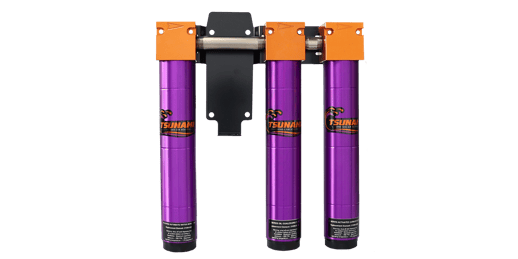
different types of air filters and how they work
Each filter is created to target specific contaminates. This is to ensure each particular contaminate is fully pulled out of the air flow to give you the purest, cleanest, air for your application.
To explain what they remove, we need a quick lesson on microns:
Microns are used to measure the size of particles that pass through the air. One micron is equal to one millionth of a meter. To put it into perspective, most humans don't have the ability to see less than 30 microns, and a piece of hair is about 70 microns. What this means: these filters are pulling out contaminates that can't be caught by the human eye.
All three filters work similarly. They run well on their own with an air supply, but the more filters added to the process, the dryer and purer air you're going to get. Let's get into what each filter is catching, and how they do it.
how Water Separators work
Unlike what the name implies, a water separator removes more than just water. Of course it removes the bulk of water, but it also pulls out oil and large particulates down to 10 microns.
A water separator can remove water at a rate of one quart per minute. This is how it's done:
- Air enters the filter and travels down a small diameter tube causing an increase in velocity.
- The air reaches the bottom of the inner tube, then is redirected up the outer tube allowing gravity and a slower velocity to capture bulk liquids.
- Velocity increases again as air is forced through small orifice baffles before entering the stainless steel mesh element.
- A centrifugal force is used to capture any remaining liquids before exiting the filter.
- Liquids are automatically ejected through the drain.

how Oil Coalescing filters work
The oil coalescing filter removes bulk oil, aerosols and fine particulates down to .01 microns. This filter runs differently to the water separator:
- Air enters the filter and passes through the element from the center to the outside.
- As the air travels through the fibrous layers, oil aerosols are captured.
- The non-wicking outer layer separates the bulk liquids from the outer flow.
- Gravity slows the bulk liquids to drip into the drain sump off the filter where they are automatically removed.
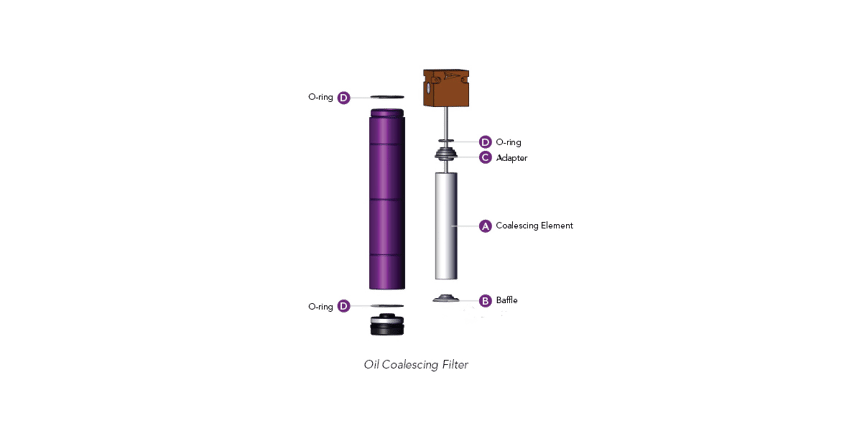
how Activated Carbon filters work
An activated carbon filter is designed to remove oil vapors and eliminate odors (and even tastes) from the air. Here's how it works:
- Air enters the filter and passes through the element from the outside to the center.
- As the air travels through the activated carbon layers, oil vapors are captured and held through the process of adsorption.
- No liquids should be present at this stage, so there is no drain.
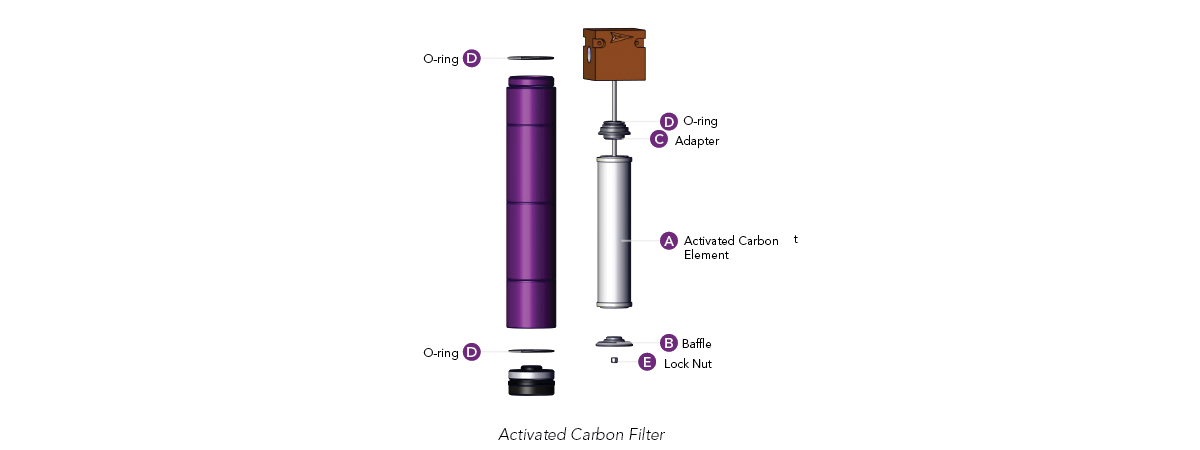
The point: Compressed Air Filter Solutions
With the help of an air flow connection, compressed air filters efficiently pull out contaminants. This is accomplished through different processes, with each filter removing a combination of bulk contaminants like dust, water, and oil and smaller contaminants like aerosols and vapors. Having a variety of filters with distinctive functions results in clean air all on their own - but they work better together.
For applications requiring dry air (air without humidity), an air dryer would be required.
types of air dryers and what they do
Compressed air dryers are vastly different than air filters. They are oftentimes bulkier, heavier, and have one main filter function: to remove water vapor (humidity) from compressed air.
Generally speaking, air dryers are built to accomplish this in one of four ways:
- Membrane
- Deliquescent
- Refrigeration
- Desiccant (molecular sieve, activated alumina, silica gel)
If the goal is to remove or reduce humidity levels in your compressed air system, a compressed air dryer is the perfect solution. By incorporating a compressed air dryer, you will be able to meet or exceed air quality requirements for your tools, equipment, or applications.
In this article, we are going to refer to heatless regenerative dryers for our explanation.
how heatless regenerative air dryers work
Heatless regenerative compressed air dryers go through two processes to achieve clean air free of humidity: the drying process and the regeneration process.
The Drying Process
- Pre-filtered air enters the dryer and is channeled through the desiccant tower(s).
- The wet air passes through the desiccant tower(s) where a desiccant material (usually silica or activated alumina) draws the water in.
- The now dry air is redirected from the tower(s) to the opposite side to continue the process.
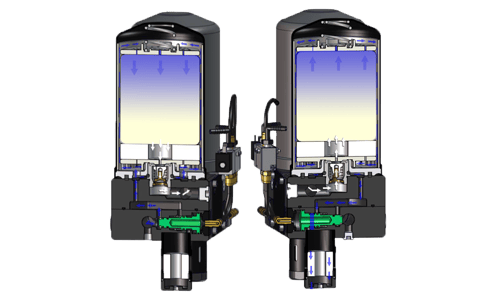
The regenerating Process
- A small amount of the newly dried air is sent back through the desiccant filled tower(s) and the desiccant is dried as the sweep air passes through the media.
- The tower(s) discharge water from the dryer with the help of the sweep air.
- The dry air exits the dryer through an outlet.
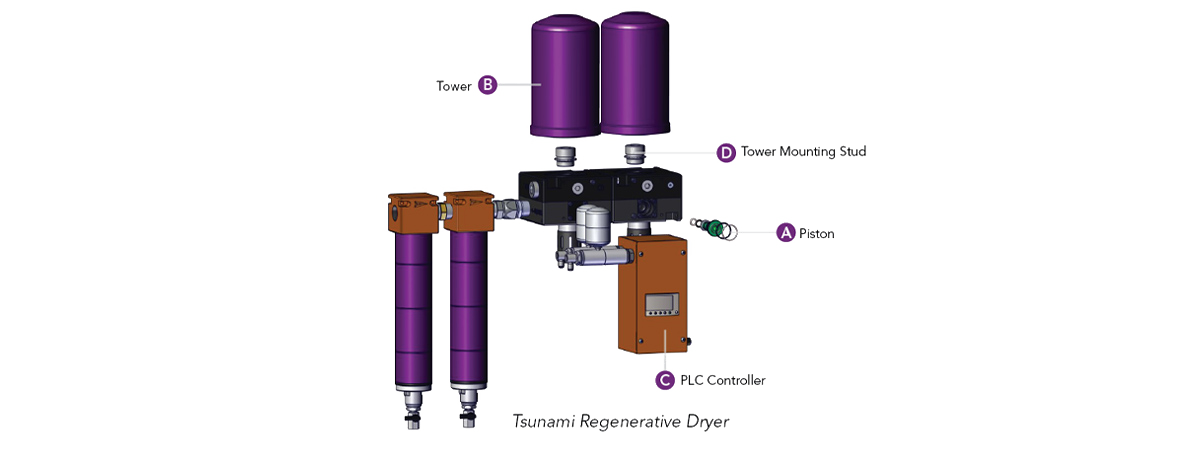
The Point: Compressed Air Dryer Solutions
The purpose of air dryers is to eliminate all moisture from the incoming air flow to ensure the best air quality for any application. Although a simple concept, it extends the life of tools, equipment, and produces incomparable dry air when paired with a pre-filtration system.
choosing the right setup for your system
A compressed air filters main function is to remove contaminants such as dust, water, oil, and other particulates. In turn, this leads to an efficiently running system, and equipment that lasts.
Compressed air dryers also play a crucial role in compressed air systems, but their main function is more linear. Their purpose is to remove humidity from compressed air systems. This leads to better productivity, reduces maintenance costs, and improves overall quality.
When deciding which drying solution is for you, here is an important question to ask yourself:
Do I need clean air? Or do I need clean dry air?
The choice is yours when deciding if an air filter or an air dryer is the right solution for your compressed air system. Both offer effective ways to filter and dry compressed air - but a combination of both ensures the cleanest, driest air is being used for your applications.
Superior air treatment starts with Tsunami
Have more questions about air filters and air dryers? Contact us today.
Edited on 3/14/2025 to update video content.
